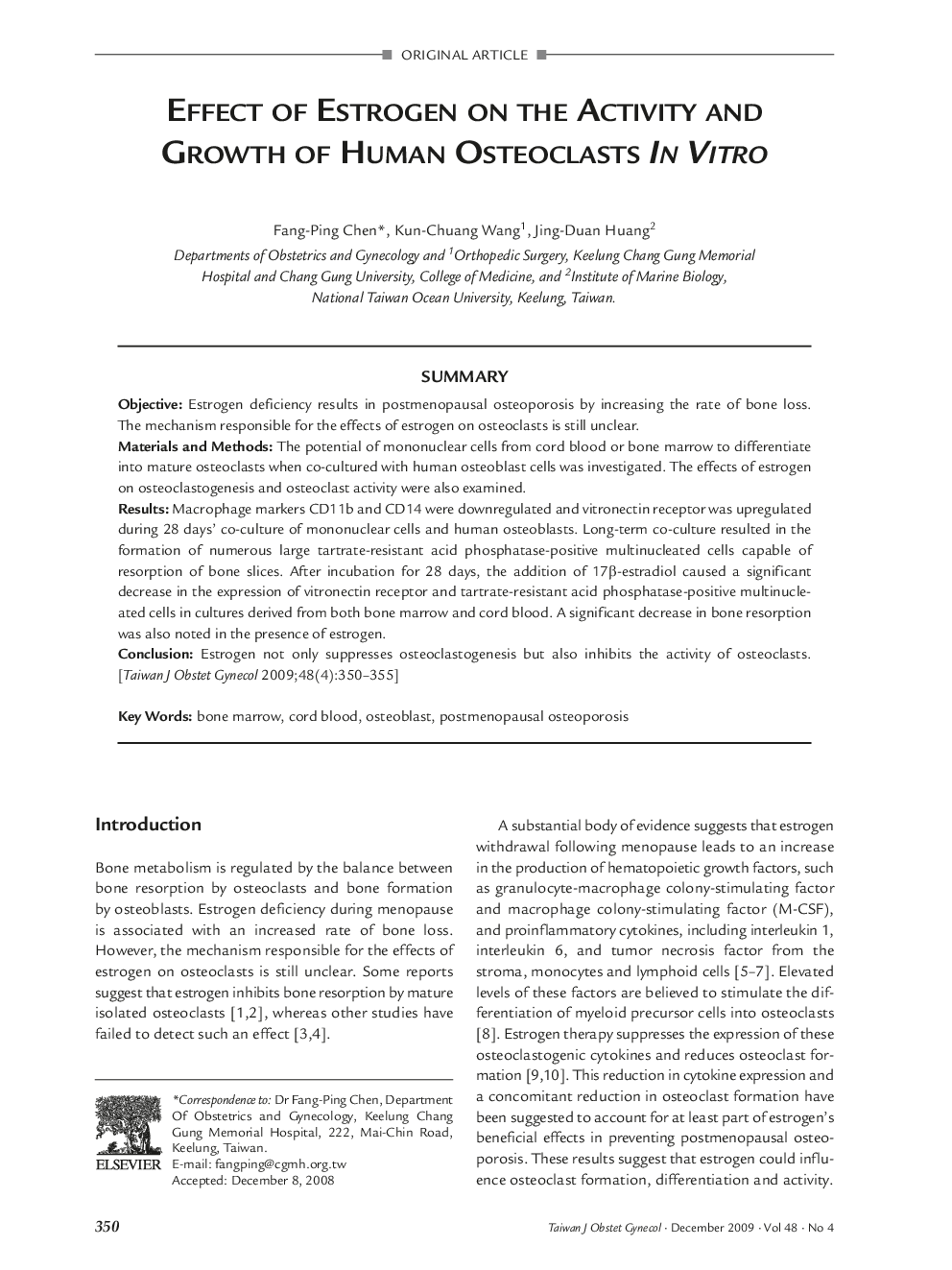| Article ID | Journal | Published Year | Pages | File Type |
|---|---|---|---|---|
| 3976172 | Taiwanese Journal of Obstetrics and Gynecology | 2009 | 6 Pages |
SummaryObjectiveEstrogen deficiency results in postmenopausal osteoporosis by increasing the rate of bone loss. The mechanism responsible for the effects of estrogen on osteoclasts is still unclear.Materials and MethodsThe potential of mononuclear cells from cord blood or bone marrow to differentiate into mature osteoclasts when co-cultured with human osteoblast cells was investigated. The effects of estrogen on osteoclastogenesis and osteoclast activity were also examined.ResultsMacrophage markers CD11b and CD14 were downregulated and vitronectin receptor was upregulated during 28 days' co-culture of mononuclear cells and human osteoblasts. Long-term co-culture resulted in the formation of numerous large tartrate-resistant acid phosphatase-positive multinucleated cells capable of resorption of bone slices. After incubation for 28 days, the addition of 17β-estradiol caused a significant decrease in the expression of vitronectin receptor and tartrate-resistant acid phosphatase-positive multinucleated cells in cultures derived from both bone marrow and cord blood. A significant decrease in bone resorption was also noted in the presence of estrogen.ConclusionEstrogen not only suppresses osteoclastogenesis but also inhibits the activity of osteoclasts.
